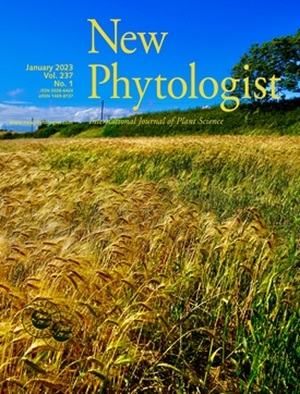Self-activating and chromosomally colocalized LsERF166 positively regulates costunolide biosynthesis in lettuce.
IF 8.3
1区 生物学
Q1 PLANT SCIENCES
引用次数: 0
Abstract
Costunolide, an important natural product with a diverse array of bioactivities, serves as a key precursor in the biosynthesis of sesquiterpene lactones in Asteraceae species. While the biosynthetic pathway of costunolide has been elucidated, the regulatory network remains poorly understood. Lettuce (Lactuca sativa), which is abundant in sesquiterpene lactones, has been selected as a model system to investigate the transcriptional regulation of costunolide biosynthesis. A multi-tissue transcriptome dataset of lettuce has been constructed, revealing that the costunolide biosynthetic genes are coexpressed across various tissues. By integrating coexpression analysis with chromosomal localization studies, an ethylene-responsive factor (ERF) transcription factor (TF), LsERF166, has been identified as being physically adjacent to the genes encoding costunolide synthases (COSs). LsERF166, a typical ethylene-inducible ERF IX TF, positively regulates the biosynthesis of costunolide by directly activating the expression of costunolide biosynthetic genes. Besides, LsERF166 also exhibits self-activation, thereby forming a positive feedback loop. The colocalization of ERF166 and COS is observed in several species in the Asteraceae family, underscoring its functional significance. Our findings reveal a self-activating and chromosomally colocalized ERF TF involved in costunolide biosynthesis, providing further insights into the transcriptional regulation of plant secondary metabolism.自激活和染色体共定位的LsERF166正调控生菜油碱内酯的生物合成。
蛇麻内酯是菊科植物合成倍半萜内酯的重要前体,具有多种生物活性。虽然cosonolide的生物合成途径已经阐明,但其调控网络仍然知之甚少。莴苣(Lactuca sativa)富含倍半萜内酯,被选择作为模型系统来研究椰子油内酯生物合成的转录调控。构建了莴苣的多组织转录组数据集,揭示了莴苣素内酯生物合成基因在多种组织中共表达。通过将共表达分析与染色体定位研究相结合,研究人员发现,乙烯反应因子(ERF)转录因子(TF) LsERF166在物理上与编码cos的基因相邻。LsERF166是一个典型的乙烯诱导型erfix TF,它通过直接激活胭脂油内酯生物合成基因的表达,正向调节胭脂油内酯的生物合成。此外,LsERF166也表现出自激活,从而形成一个正反馈回路。ERF166与COS的共定位在菊科的多个物种中被观察到,这说明了它的功能意义。我们的研究结果揭示了一种自激活和染色体共定位的ERF TF参与了木香内酯的生物合成,为植物次生代谢的转录调控提供了进一步的见解。
本文章由计算机程序翻译,如有差异,请以英文原文为准。
求助全文
约1分钟内获得全文
求助全文
来源期刊

New Phytologist
生物-植物科学
自引率
5.30%
发文量
728
期刊介绍:
New Phytologist is an international electronic journal published 24 times a year. It is owned by the New Phytologist Foundation, a non-profit-making charitable organization dedicated to promoting plant science. The journal publishes excellent, novel, rigorous, and timely research and scholarship in plant science and its applications. The articles cover topics in five sections: Physiology & Development, Environment, Interaction, Evolution, and Transformative Plant Biotechnology. These sections encompass intracellular processes, global environmental change, and encourage cross-disciplinary approaches. The journal recognizes the use of techniques from molecular and cell biology, functional genomics, modeling, and system-based approaches in plant science. Abstracting and Indexing Information for New Phytologist includes Academic Search, AgBiotech News & Information, Agroforestry Abstracts, Biochemistry & Biophysics Citation Index, Botanical Pesticides, CAB Abstracts®, Environment Index, Global Health, and Plant Breeding Abstracts, and others.
 求助内容:
求助内容: 应助结果提醒方式:
应助结果提醒方式:


